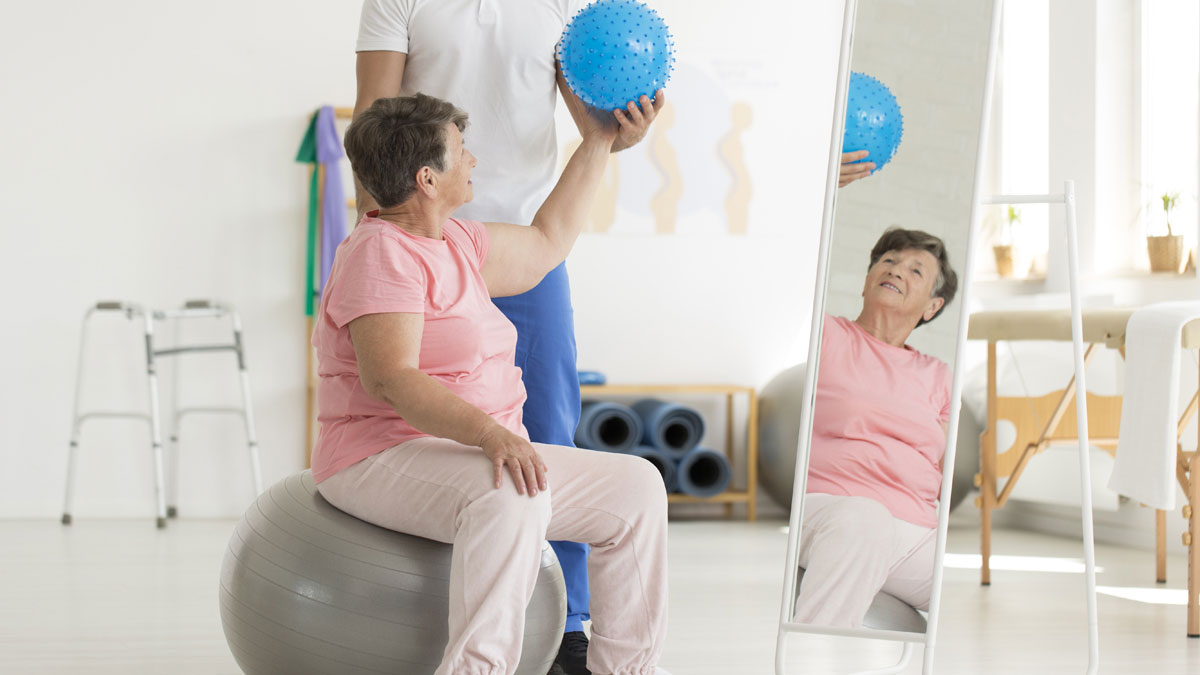In the last several months, staying home has become the norm, and no one has dealt with restrictions more than the senior population. Whether giving up trips to the hairdresser and supermarket or just refraining from morning jogs, there’s been far less activity – and, unfortunately, the downfalls that come with it.
Many seniors think feeling dizzy and off balance goes with getting older, but that is not necessarily true, according to Tony Brundage, physical therapist and senior clinic manager for CORA Physical Therapy. In fact, a loss of balance can happen at any age if the person isn’t dedicated to staying active. And while young people who have balance and coordination issues are more likely to look into it sooner, seniors, already convinced their physical woes are part of life, don’t bother to take action until things become dire.
“People will tell us they have a balance issue. Then they start telling us about the things they don’t do anymore, like taking walks,” Brundage explained. “There’s no pain or injury, but, over time, the inactivity matters, and then they can’t reach over their shoulder.”
Another mistake people make is thinking that all balance issues are due to the inner ear, when actually the inner ear is a small part of a larger puzzle, noted Brundage, who pointed out that many of CORA’s patients start off at an ENT but end up at CORA.
“Those crystals in your ear can get dislodged and float around in your eustachian tubes. But the fluid moves differently to go around the crystals, like rocks in a river. The inner ear is a small part of balance. Muscles and joints are a bigger part,” he said.
Instead of waiting for a mobility emergency, seniors should look for reasons to visit a physical therapist for a fall prevention program. These reasons, Brundage noted, might be simple lifestyle changes such as fewer walks, fewer hours spent in the yard, a history of falls and a lack of confidence getting up at night or in low-light situations.
Patients who visit CORA will learn there’s no “cookie-cutter” program – it’s different for everyone, and the length of time depends on the patient’s eagerness to take the reins on his or her exercise regimen. Programs begin with an evaluation of what the patient can and cannot do – and they’ll never be forced into doing more than they can.
“If we get someone who can’t stand up, we don’t worry about it because everyone comes in at different levels of skill. I let them talk, and we try to find that underlying main reason for their balance problems. Sometimes, it could even be a medication they are on,” Brundage said.
Throughout the program, patients are given mobility “homework” to keep up their progress at home. When they’re ready, they get a plan to stay active on their own time – which is the true goal.
“We give you the tools you need for a number of weeks, and you keep doing it yourself,” said Brundage.
“A lot of what we do is educating – we can’t be with someone 24 hours a day. We support them and educate them, but, in the long run, they have to want to do it.”
He added, “Health is ongoing. You can expect aches and pains with age, but you can have quality of life. To me, it’s about giving these people the tools and confidence to have that quality.”
To learn more, visit www.coraphysicaltherapy.com.
By Denise K. James
